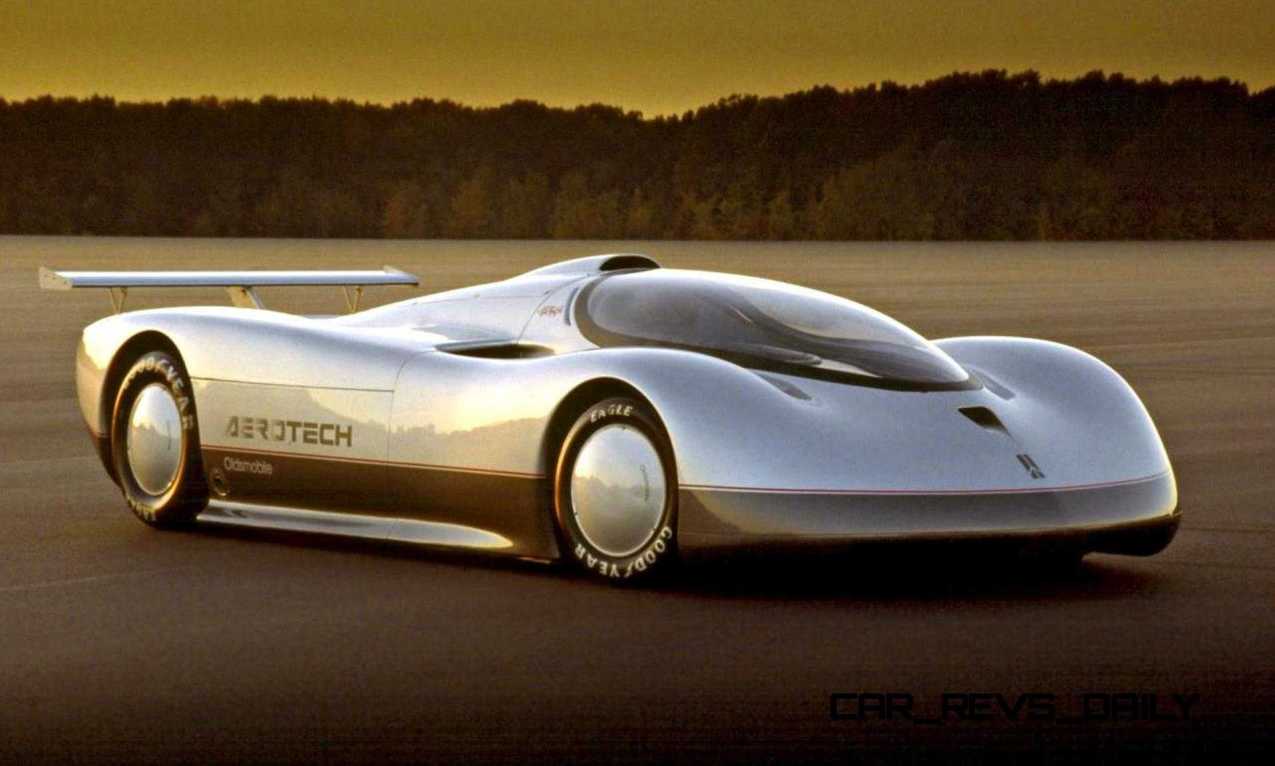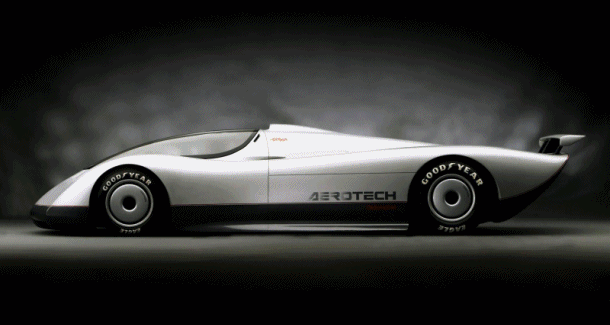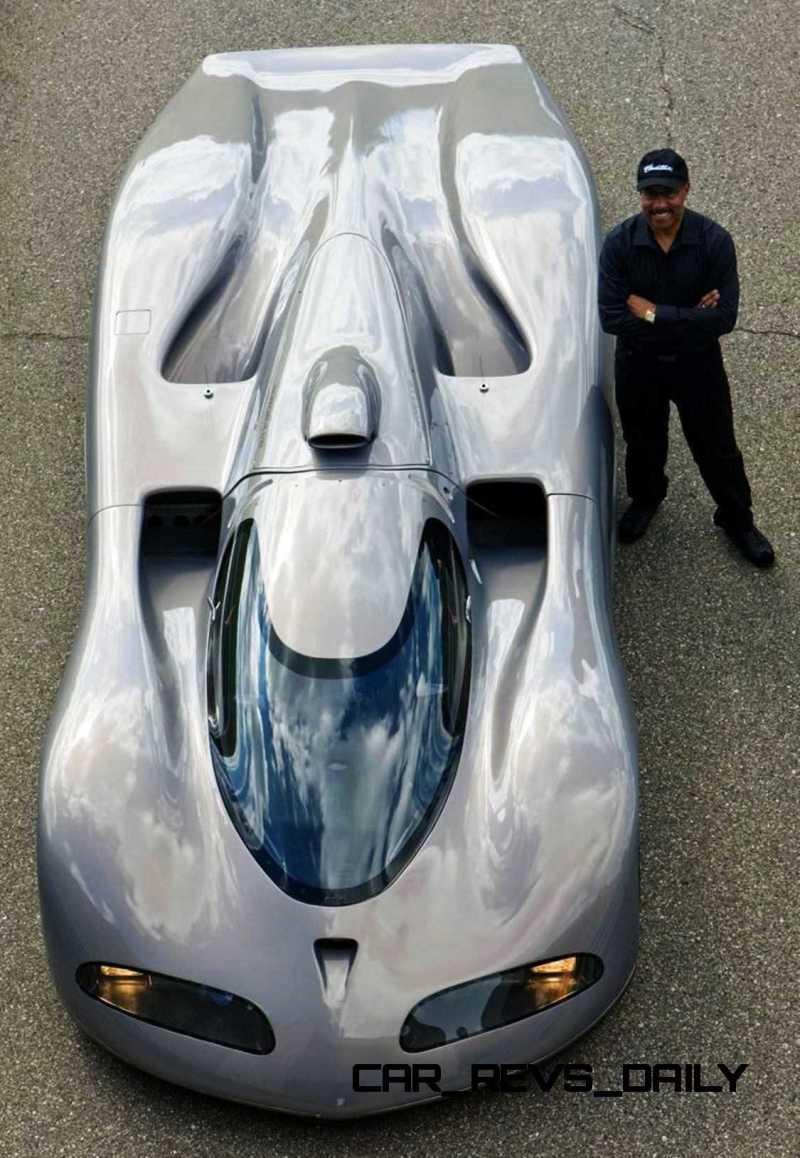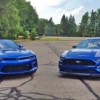It might seem hard to believe, but it wasn’t too long ago that the very idea of a hyper car was considered a pure fantasy. While the supercar segment would morph into one of the most iconic parts of the 1980s and 90s, hyper cars were pure science fiction, and were relegated to being curious science experiments for automakers. However, the Oldsmobile Aerotech concept would help give the world a glimpse into a future where the hyper car would synthesize its way into modern culture especially in terms of design.
Subtle similarities help paint broader picture


Unlike the Aerotech inspired go-kart which had as much power as the Briggs & Stratton mower that you might’ve seen in your local Builder’s Square during the 1980s, the Aerotech concept was all about showcasing the potential that GM’s engineering could bring to the table when it was not constrained by a stifling bureaucracy filled with bean counters.
That feat is even more impressive considering that it was created for Oldsmobile, the same brand that was focused on proving to younger buyers that the brand was not just for their dads and their grandparents anymore. The Aerotech had no chance at production, but like the Bugatti Veyron and Chiron, the Aerotech was a rolling test bed that was meant to test out new technologies that would eventually trickle there way into production vehicles. That included exterior styling that was decidedly more aerodynamically honed than the squared off look that had morphed into a dated styling hallmark of the brand.
The front fascia of the first Aerotech in the series had a nose devoid of headlights and was designed to achieve maximum aerodynamics. The nose led the eye up to a curved windshield with the roof sloping downward towards the rear of the car. The end result was a suit of clothes that not only allowed the Aerotech to slice its way through the air, but also bring a distinct flair that was missing from many GM offerings. This religious devotion to aerodynamics is also seen in modern hyper cars which appears to show that the Aerotech had found the perfect formula when it came to looking good while also being an exercise in pure function. The interior was supposed to be reminiscent of a fighter jet and came with minimal frills to back up its high speed character.
Speed with far fewer cylinders


While the Aerotech and modern hyper cars might have some similarities when it comes to exterior styling cues, the Aerotech series stood out by taking a very different approach to performance. The last Aerotech model in the family was powered by a 4.0 liter V8, but our focus is on the first two in the series which were powered by a heavily modified four cylinder engine. Dubbed the Quad 4, this engine was supposed to be the perfect blend of fuel economy and performance. While many modern four cylinder engines make that task seem easy to pull off with the help of turbocharging, back in the 1980s four cylinders had a long way to go in reaching that balanced threshold. That was especially true of GM four cylinder engines which were crude and lacked the vigor to wow buyers to their green charms.
The Quad 4 aimed to change that perception with its Dual Overhead Cam design and a relatively modern construction process with the head being made out of aluminum, and the block itself made out of durable cast iron. As mentioned, the lack of vigor was an issue, but the Quad 4 flipped the script on all that thanks to its impressive horsepower numbers with the engine being capable of producing up to 190 horsepower in its most potent form.


But that measly figure was not enough for the Aerotech and Oldsmobile engineers who promptly added a turbocharger to a 2.0 liter version of the engine that helped shoot horsepower up to 900 horsepower. That figure was insanely bonkers, and helped the Aerotech nab several high speed driving records. As expected, Oldsmobile was eager to build upon this success and made Aerotech II which upped the Quad 4 to 2.3 liters and also added a second turbocharger into the equation. That helped push final horsepower to just over 1,000 and further blurred the boundaries of speed that it was able to smash through.
Bear in mind, this was done with only four cylinders, which is a complete contrast to the elaborately engineered quad turbocharged W16 engine that does roughly the same thing in the Veyron and the Chiron. We bet you can’t name other four cylinder engines that can achieve this extremely wicked level of performance especially with a five speed manual handling gear shifting duties.
What happened To The Aerotech?
As mentioned earlier, the Aerotech had no chance of even coming close to achieving production. While it did a very good job of making a bold engineering and design statement, GM at the time simply did not have the money needed to bring what would essentially be an ultra limited and ultra expensive hyper car into the market. It’s also important to note that the mid 1980s were also a time when the economy was declining, and that only made the environment for high end toys even more volatile.


In addition, it was also dealing with a more immediate problem, the decline of Oldsmobile. Once a shining beacon in the 1970s and 1980s Oldsmobile’s fortunes changed in the 1990s, with the brand experiencing a gradual slide in sales and relevance. The Aerotech was supposed to help lure in customers, but it became clear that even its halo effect could not undo what was already happening in terms of Oldsmobile’s sales woes. Oldsmobile would continue to decline until GM finally pulled the plug on Olds in 2000, with the last models ending production a few years later.
As for the Aerotech, its relevance faded along with Oldsmobile’s sales numbers. However, five years after it nabbed the speed record in 1987, GM engineers built one final Aerotech variant which was equipped with a modified version of the 4.0 liter V8 used in the Aurora sedan. Like the Quad 4s before it, this eight cylinder came equipped with twin-turbochargers but endurance records were this particular powerplant’s forte with the eight cylinder Aerotech managing to nab 47 different endurance speed records during the eight straight days that GM ran it at Fort Stockton. This Aerotech also received the most extensive exterior updates including new headlight assemblies and more.

 Carl Malek
Carl Malek
Carl Malek has been an automotive journalist for over 10 years. First starting out as a freelance photographer before making the transition to writing during college, his work has appeared on numerous automotive forums as well as websites such as Autoshopper.com.
Carl is also a big fan of British vehicles with the bulk of his devotion going to the Morgan Motor Company as well as offerings from Lotus, MG, and Caterham. When he is not writing about automobiles, Carl enjoys spending time with his family and friends in the Metro Detroit area, as well as spending time with his adorable pets.
www.car-revs-daily.com/author/carlmalek/ Related








